Gembu: Trip to scenic spot on edge of Nigeria
Gembu has all it takes to evolve into a world class tourism destination, and government, working with the private sector, can bring this about. It has green hills, rivers, valleys, and is said to be free of mosquitoes. Sitting on the edge of Nigeria, and lying close to the border with Cameroon, Gembu is endowed […]
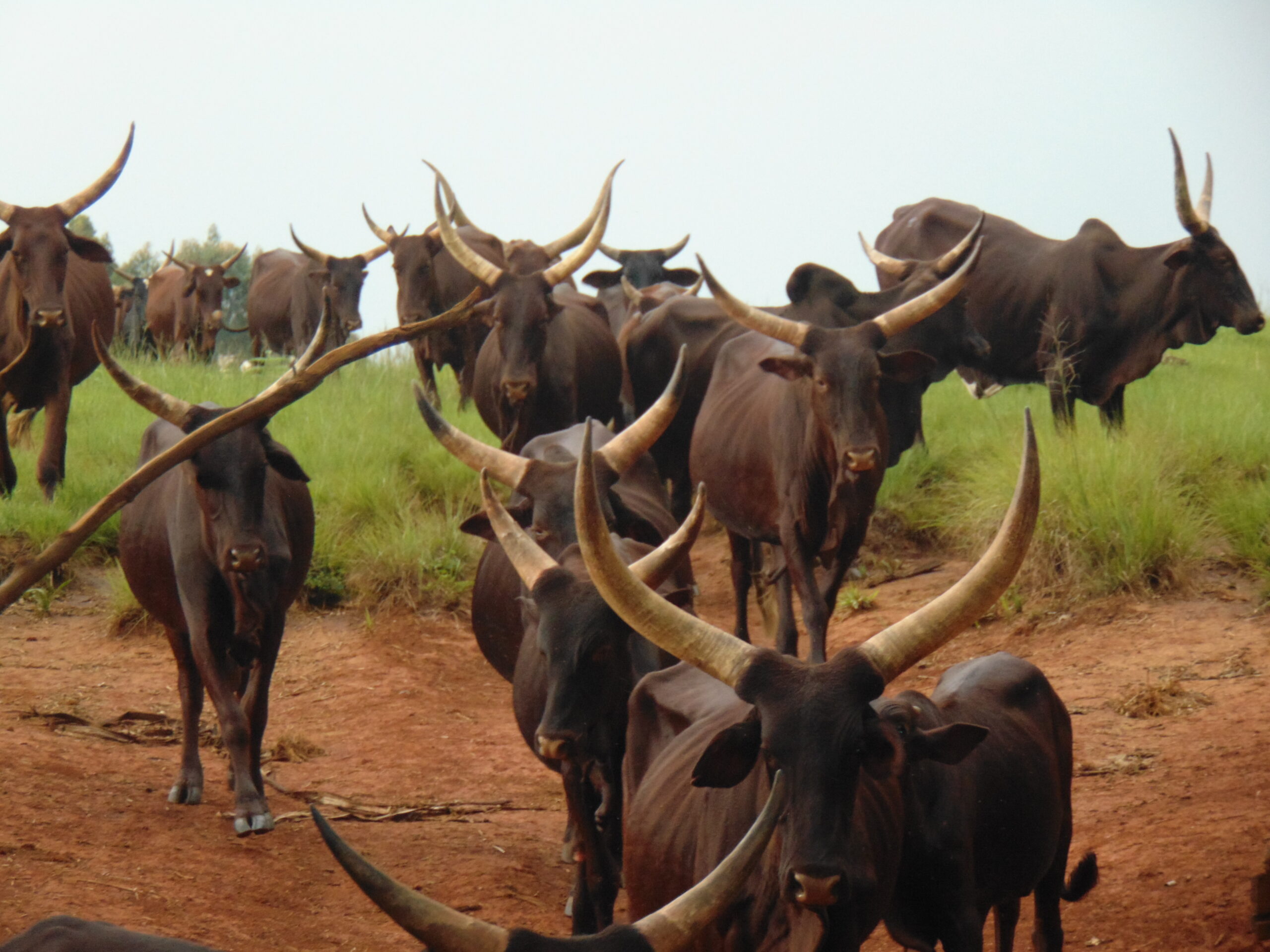
Gembu has vast herds of cattle
Gembu has all it takes to evolve into a world class tourism destination, and government, working with the private sector, can bring this about. It has green hills, rivers, valleys, and is said to be free of mosquitoes.
Sitting on the edge of Nigeria, and lying close to the border with Cameroon, Gembu is endowed with breathtaking scenes. If you plan to travel to Gembu in Taraba State, there are several routes you may use, if you are departing from Abuja. One of these is the Abuja-Jos-Bauchi-Gombe-Jalingo route, it takes two days to cover, with a stop off in either Gombe or Bauchi. A stop off is important to have a much-needed rest. There are scenic spots and interesting details to take note of throughout the journey.
Adamawa mountains
The mountain road stretches from Gembu all the way to Mayo Selbe
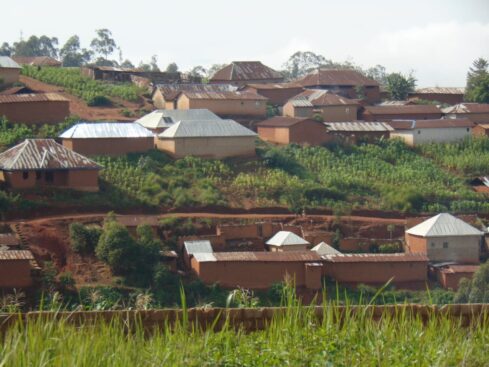
We pass through parts of Adamawa and see mountains in the distance. Behind the first mountain is yet another distant mountain, yet another, and then another. It is a corridor of impressive mountains known as the Adamawa Mountains. In some places such as northern Adamawa and southern Borno, these are also known as the Mandara mountains, and they begin in Borno, pass through both Adamawa and Gembu and continue into Cameroon as one continuous mountain range spanning two nations.
‘The beauty of Adamawa lies in its mountains,’ writes A.H.M. Kirk-Greene in his work titled Adamawa Past and Present (1958)
This is all uplifting, especially for one travelling along the route for the first time, viewing inspiring scenes with the eyes of a child.
Extra seat
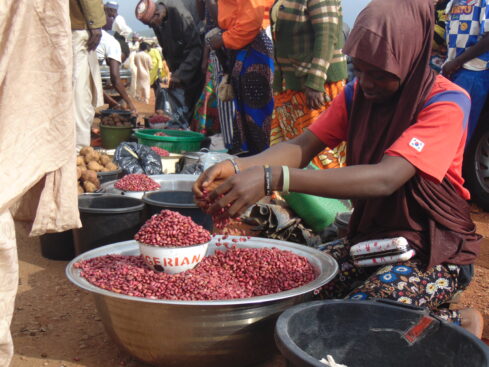
In the course of the journey, it is necessary to pay for the extra front seat or we will wait for a long while, as the search is made for that single passenger. The wait can be quite draining.
At Jalingo, there are two motor parks from where vehicles heading to Gembu can be got. The more popular one has a great number of Sienna cars heading to Gembu.
Overloaded

The roof of the vehicle is piled high with goods, poles, boxes, bags, iron bars, and commodities, making me to wonder how the car will ascend to Gembu when we get to the mountain road which begins at Mayo Selbe. The goods are held with ropes, and the ability to tie all these plastic items, bowls, odds and ends together, so that nothing falls off, is really an art. We all watch as the driver climbs onto the roof and works there for a while tying, retying and forming knots, passing rope through or around various items, including bags, bicycles, sacks etc. His nimble fingers travel through an entire ecosystem up there.
All of a sudden he descends and we are set to leave for Gembu. It is 5:00pm.
‘Where the journey begins’
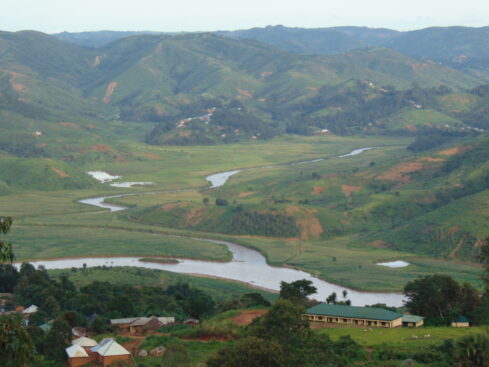
Finally, we get to Serti, and we began the trip to Mayo Selbe, which is the first community along the winding mountain road that leads to Gembu.
It is 3:00 am and the lights of the vehicle cut through the darkness. When we get to Mayo Selbe, Mohammed Umar, a businessman and fellow traveller, mentions “This is where the journey begins. The road from this point to Gembu itself is very bad.”
Roll backwards
Very soon after leaving Mao Selbe, the engine of the vehicle begins to make a strange sound, as the car ascends the mountain road. All of a sudden the vehicle begins to roll backwards, and we had to stop in order to disembark and push the car forward. On two other occasions the car rolls backwards, and we disembark in order to push the car again. We do all this in pitch darkness. The driver quickly finds stones which he places at the back of the rear tyres. This is somewhere between Mayo Selbe and Maisamari, another community on the way to Gembu.
Finally, we arrived Gembu at about 5:00 am, and I went to a hotel which I had contacted a few days earlier. Umar guided me to the hotel, and then we parted after exchanging numbers.
Blanket, warm clothes
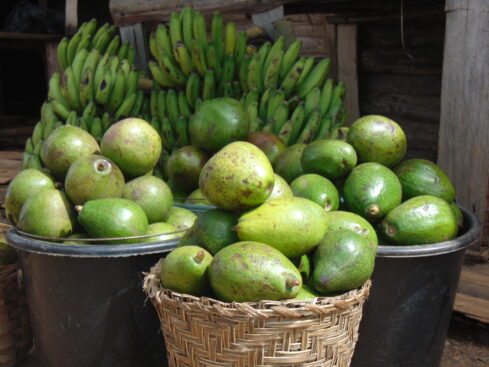
My first interview is with Aliyu Mansur, the Galadiman Mambilla, a title holder in the community. He adds “Gembu is free of mosquitoes. Some of the fruits here are not found in other parts of Nigeria. The species of banana is quite different from the types produced elsewhere. Carrots do well here as well as cabbages. Even the maize is different from those found elsewhere. The temperature here does not rise, and you need a blanket and warm clothes.”
All these crops and fruits can be easily bought in Gembu, as well as other neighbouring communities such as Nguroje. Women sell fruits by the roadside, and there is a lively market in the town.
Sunshine & clouds
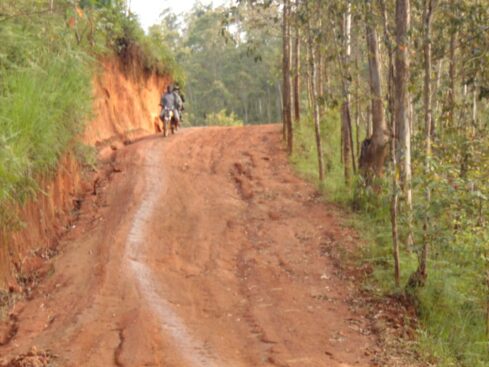
Very soon I discover that some days are filled with sunshine for a few minutes or hours, then clouds come and expel that memory, making you think you are in another community altogether. A visitor experiences many seasons every day in Gembu.
No fans
Most houses in Gembu don’t have fans or air-conditioning systems, and this is because it is the coldest part of Nigeria. Trade in either of these items won’t do well in the community.
Dawn comes early on the Mambilla plateau, of which Gembu is a part. Shortly after dawn on some days, sunlight passes through the clouds illuminating the hilltop for a few seconds.
Everybody speaks Fulfulde
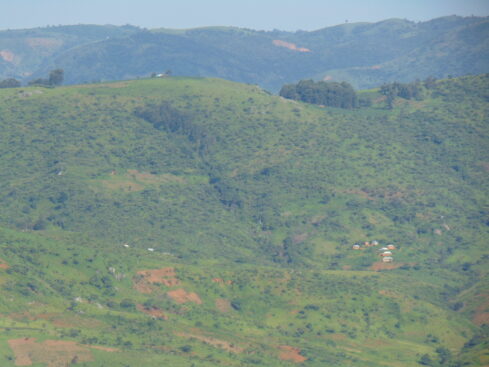
The people are simple, easy-going farming folk and there is a significant population of pastoralists among them. Most houses are made from red soils which abound in the locality, and the houses are believed to be ‘bulletproof.’ This belief is so widespread in Gembu, it must be true.
Almost everybody speaks Fulfulde, even non-Fulani groups such as the Mambilla, Kaka and the Panso are fluent in the language. I meet Onyema Ukwueze, a businessman from Enugu State, who speaks Fulfulde, and says he learnt the language in two months.
The Fulani are not the only cattle rearers on the plateau, groups such as the Mambilla, Panso and Kaka are cattle rearers too. In Gembu, non-Fulani who rear cattle can be given the title of Ardo or Sarkin Shanu. It is an amazing part of Nigeria.
Gembu with its scenic spots and dark brown cattle with large horns, is so many things in one breath.
Lithium
Ahijo Bamanga, an artisanal miner who was born in Gembu, comments on the availability of solid minerals on the plateau. He says “Gembu has Lithium which is important for making electric cars. Lithium is found in some areas, in isolated areas of Gembu. Blue Sapphire is also available in Gembu. Blue Sapphire is a gem used for jewellery. High-quality blue sapphire is used to make necklaces, the low-quality type is used for beads.”
Sang
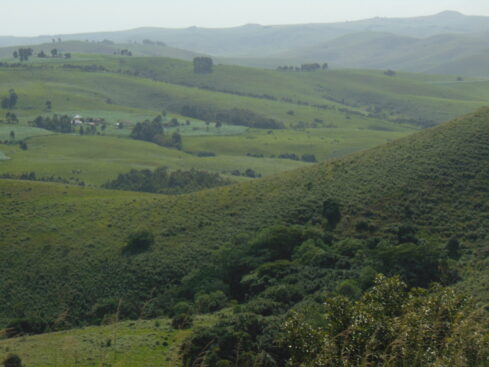
One lasting memory of Gembu is that of the Mambilla women who make bags out of bamboo, known as the Sang. They put all manner of goods or items in it, as they walk uphill, or down into the valleys, or whenever they travel in canoes across the river Donga.
Nooks and crannies

Ado Isa operates a motorcycle taxi and he takes me all over Gembu. He is Mambilla, can speak Fulfulde and knows all the nooks and crannies of Gembu. Every day we would leave the hotel at about 9.00 am and head for a location, either to take photos or to interview persons.
River Donga
The river Donga can be seen from the hotel. We have to go down a winding path to get there. To our right is a valley which is quite deep. Finally, we get to the river bank. Left and right of the river are green hills of varying sizes. It’s a memorable scene.
On the opposite bank is a small crowd of passengers and a few canoes. People cross every few minutes and some of the canoes convey motorcycles. Some use motorcycles to ride out of the canoes onto the bank where we are standing. The boat is actually a refurbished wooden structure, which is used as a canoe.
Dawn

One evening I asked Isa to come to the hotel at 6:00am the next morning. I wanted to see what Gembu looked like at that early hour. He did and we sped around. I was able to watch the sunrise and travel along some country roads.
On another morning he came at 6:00am. We had to go to watch a herdsman milking cows at about 6:30am, and do some interviews with Yakubu Maiwada, Jauro Kaka, the owner of AYK ranch and the herdsman who milked the cows.
Gembu as magnet
“Gembu attracts people. Some people come from Yola and Jalingo, because of the heat over there. They come to settle here, and after the heat has reduced, then they go back. They do this during the annual Ramadan fasting.”
Umaru Zubairu, Wakilin Mambilla, is making a point about the attractions of the Mambilla plateau. The interview takes place on a cold morning.
Within his sitting room is a silver teapot. There are a number of glasses arranged on another tray. He adds that on account of the cold weather, tea drinking is a common feature of everyday life in Gembu.
Ramadan
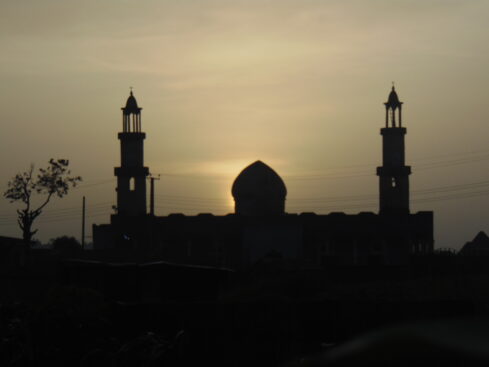
He continues “The annual Ramadan fasting here is quite different from fasting in other places, such as the Maiduguri and Adamawa area. It is because of the weather of this place and the scenery too. People love this place. There are no mosquitoes here.”
The weather conduces for learning. According to him “This place will be good for studies, because of the weather, it is not so harsh, it’s not so cold. People will enjoy studying here.”
Vast herds
Mansur, Galadiman Mambilla also speaks on the favourable weather “As you are ascending the weather will be changing. The area is very cool. You cannot compare it with Gashaka, Mayo Selbe or Jalingo. All year round the weather is cool. It is a mountainous area.”
“The green pasture has attracted vast herds to graze. We have river Donga, the biggest river passing through the mountains to Donga in Takum Local Government and then into Cameroon.”
Umar, who is present during the interview, comments “One of my brothers in South Africa says there is a place there which is similar to Gembu. They make use of cable cars. People travel there from Europe to visit. We need investors to come and invest in Gembu.” He thinks the Taraba State government can borrow a leaf from South Africa in this respect.
Cattle rearing
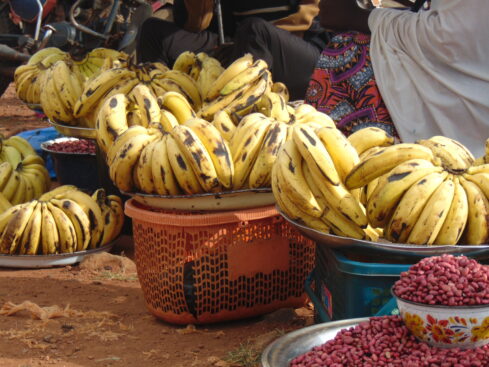
“The environment is very conducive and attracts visitors. If you follow the topography and geographical location of the area, the location is very rich in terms of agriculture, eucalyptus, cash crops, banana, pear, guava, kola nut. Also, there are cattle on the plateau, which is very conducive for cattle rearing and other animals,” says Abubakar Hamma’adama, Wakilin Kaka, commenting on Gembu.
‘Bigger, healthier’
He reveals “It’s as though you are visiting Brazil. The cattle are bigger and healthier than cattle in other parts of Nigeria.” Gembu has always produced milk in great quantities. There is a popular report that sometime in the 80s so much milk was produced in Gembu, it had to be thrown away because of inadequate storage or processing facilities. The newly created Ministry of Livestock will find Gembu fertile soil for much good work.
No herdsman
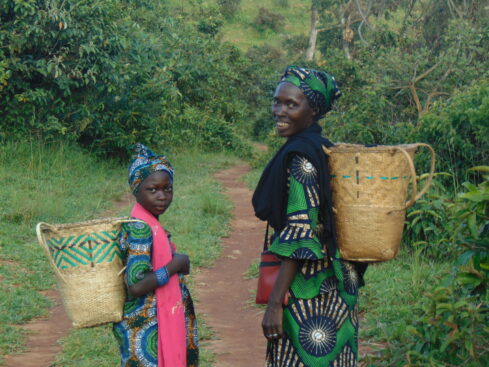
One remarkable thing about Gembu is the possibility of seeing a field with large cows within and no herdsman in sight.
This happened many times, especially along the road to Nguroje. Sometimes, the cows form a line, almost by themselves, and walk in a long line, with just one cow leading them at the front.
Umar adds “cattle are not allowed to roam about on the Mambilla plateau. This is one unique thing about the plateau. Rather, they are kept in a fenced field owned by the owner of the cattle. This is a type of ranching which is very common here.”
Tourist destination
“Gembu is a tourist destination. We live in peace and harmony. Our terrain and the weather encourage foreign investors to come in from time to time. We heard the Federal Government is going to build a stadium here attached with a 5-star hotel,” adds Maiwada.
Sightseeing

Bamanga opens up on the attractions of Gembu “The weather is number one. The area is good for sightseeing, and there are lots of cattle. The Mambilla tea at Nguroje, Kakara is another place to visit. The tea is great, it’s fantastic and exported to neighbouring countries.’
“Once you are in Gembu, you want to remain. The weather is not harsh.”
He adds that cattle are a big attraction in Gembu, and that cattle rearing is part of farming. “Whatever you want to grow may do well there. Local chicken, poultry can do well there. Gembu is a great opportunity.”
Sardauna
However, Gembu lacks infrastructure and easily qualifies as a neglected border region. Hamma’adama gives a background to the challenges faced by the people in the area.
Hear him “When Sardauna came here in the 60s, to campaign for this area to remain in Nigeria, he promised that if the people of this area voted to join Nigeria instead of joining Cameroon, we will be given equal rights with other Nigerians. He said we will be given all the infrastructural and social amenities, similar to what is given other Nigerians. Our people were convinced and voted to join Nigeria.”
Roads within Gembu are in bad shape, as well as most of the rural roads. There is also inadequate pipe-borne water, with many locals digging boreholes or making use of nearby streams.
3 weeks

He vividly describes the challenges locals face while travelling “In those days there was no tarred road, from the bottom of the hill to the top of the hill. Sometimes, you will spend two to three weeks on the road, and you will not reach Gembu due to the poor nature of the road, especially during the rainy season. But in the dry season, there is no problem.”
Abandoned
Hamma’adama says “The people of this area began to feel that they had been abandoned after the death of the Sardauna. This was until the time of Babangida, when he awarded the contract for the construction of the tarred road from Mayo Selbe to Gembu here. At that point, we started feeling that we were part of Nigeria.”
Sun
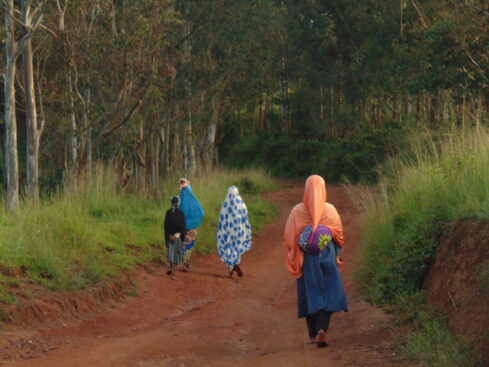
His words “During the rainy season you will spend 2 to3 weeks from Mayo Selbe here, pushing vehicles. You will have to sleep by the roadside until the next day, by which time the sunshine has dried the road.”
In addition, there are numerous failed sections of the Jalingo-Gembu road “This road is a federal road, a Trunk A road. It was contracted by the federal government. The problem is that of maintenance, which is not regular. That’s why the roads are in bad shape,” explains Zubairu.
However, an online report indicates that the Taraba State government plans to dualise sections of the Bali-Serti-Gembu road.
Forgotten
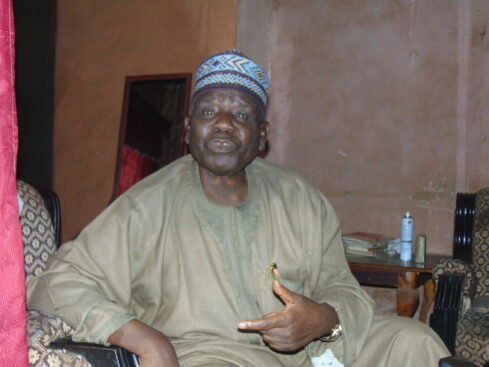
He continues “One other problem we are having here is the fact that we don’t have higher institutions. Apart from secondary schools, there are no universities or polytechnics. We don’t know the reason for this. The highest institution we have here was established by an indigene of this place, its a private organisation, a diploma-awarding institution.”
Taraba tourism
A document produced by the Taraba State Tourism Development Board (TSTDB), identifies the state as “a tourism giant not only in Nigeria but in the whole of West Africa.” It emphasises “The readiness of the state government to fast track the development of Taraba’s tourism industry on an unprecedented scale.”
However, a research paper by Oruonye, Ahmad and Tukura, titled Prospects of Tourism Development on the Mambilla Plateau: Lessons from Obudu Mountain Resort, Nigeria, identifies the challenges around Gembu which limit the flow of tourists.
According to the researchers, “Tourist flow to the area has been very low, owing to a number of challenges. Some of these challenges include inaccessibility of most of the important tourist sites, poor transportation network and connectivity, lack of awareness and poor infrastructural development.”
They suggest; “The state can do well by completing the design of the state tourism development master plan that started many years back. This will provide the required roadmap to tourism development in the state.”
Honey & other things
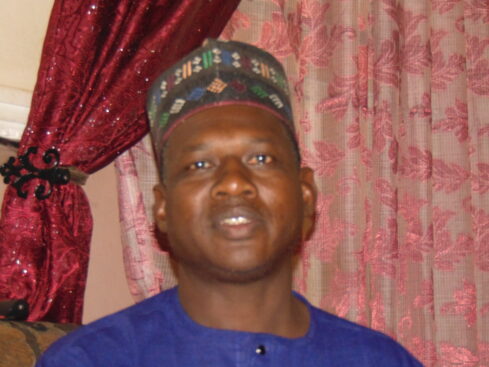
Hamza Zuma, dark complexioned with a sense of humour, sells honey in Gembu. He imports honey from Cameroon, and can send to any part of Nigeria after payment of a charge, of course. Zuma states that good quality honey can be obtained from Cameroon.
At the motor park where Zuma sells honey, there are many women selling fruits, pears, and bananas. Many buses fill up every hour heading to Jalingo, and, perhaps, a few other locations.
Hotels
It was Umar who mentioned that there are about four hotels in Gembu, with a few smaller ones. “If many visitors come to Gembu and the hotels do not have rooms for all the guests, then guest houses such as the one at Kakara are used as alternatives,” he says.
Cable cars
The hills and the mountain range around Gembu presuppose a system of cable cars, such as are seen at Obudu cattle ranch. This also implies electricity, roads, hospitals, hotels, restaurants and many other facilities, that support and sustain a regular inflow of tourists.
Gembu, with good weather, hills, rivers and their tributaries, fruits and meals, can be a major employer of labour if it has the supporting infrastructure to transform it into a tourism destination.
Numerous efforts to interview the Chairman of Sardauna local government, on tourism around the plateau, and challenges faced by the sector, failed.
Descent
It was time to return to Abuja, and so I began the descent to Mayo Selbe and onward to Jalingo. It is really glorious countryside, with cattle, green hills and indescribably beautiful valleys on both sides of the road. There were a few cars along the way, which could not make the trip up to Gembu, and were being repaired for one mechanical fault or the other. Other vehicles were parked by the road, with the drivers nowhere in sight.
There is a petrol tanker which had an accident with another vehicle. It is a miracle that it did not roll into the valley. Mechanics were carrying out repairs.
In the distance is a landscape encompassing hills, valleys and mountains, upon which sunshine fell, which no earthly tongue can suitably capture or summarise.
I keep taking photographs of the tall rock masses and other features of the landscape as we travel down. We pass Nguroje, Maisamari, Mayo Selbe, and Serti as well as other communities with enchanting names.
